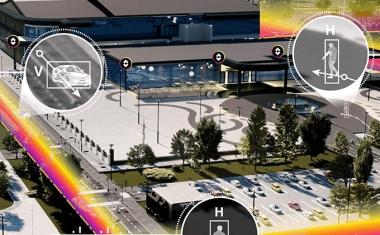Vandal-resistant dome camera with 1/3" CMOS Seawolf sensor

Grundig, the German electronics manufacturer, has addressed extreme, wide dynamic range (WDR), CCTV camera requirements with its vandal-resistant fixed dome. The dome uses a 1/3" Pixim CMOS Seawolf sensor to produce some of the best WDR performance available.
Uniquely, the data from each pixel in the Pixim sensor is processed separately. Every part of the digital image produced by the Pixim camera has optimal exposure and colour reproduction accuracy, irrespective of lighting conditions. It provides clear, crisp images with consistent detail. Faults such as “blooming” and “dazzle” can be mostly eliminated.
The Grundig Pixim dome is designed for high-contrast lighting conditions and is ideal for intelligent video analysis applications, such as license plate or facial recognition. The Grundig Pixim dome is a true day/night camera with a removable IR cut filter. Its colour resolution is 690 TVL with black and white at 800 TVL. It has an external weatherproof housing rated at IP66, 3-axis gimble with surface, flush and angle mounting options and a Tamron vari-focal lens of f = 2.8 - 10.5 mm. A further advanced feature includes motion adaptive digital noise reduction.
The Grundig camera range also includes two fixed dome and two speed dome cameras, based on the 1/3" Sony PS Super HAD CCD, also with advanced WDR capability.















